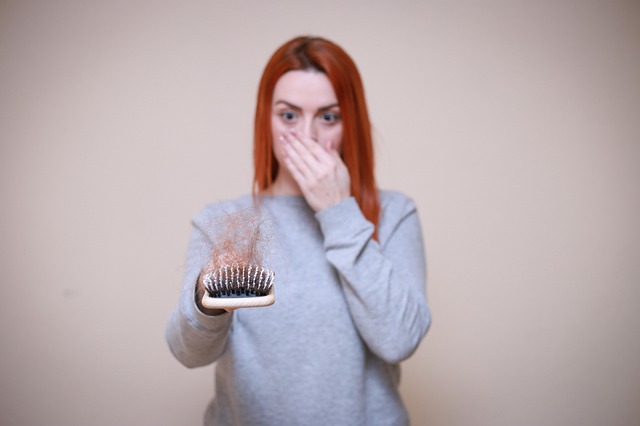Scientists have long tried to duplicate the procedure that junction rectifier to the primary semipermanent remission twelve years agone.
With the questionable London patient, they seem to have succeeded.
 |
For simply the second time since the worldwide epidemic began, a patient appears to have been cured of infection with H.I.V., the virus that causes AIDS.
The news comes nearly twelve years to the day once the primary patient best-known to be cured, a feat that researchers have long tried, and failed, to duplicate.
The surprise success currently confirms that a cure for H.I.V.
infection is possible, if difficult, researchers said.
The investigators square measure to publish their report on Tues within the journal Nature and to gift a number of the main points at the Conference on Retroviruses and expedient Infections in port of entry.
Publicly, the scientists square measure describing the case as a semipermanent remission.
In interviews, most experts are calling it a cure, with the caveat that it is hard to know how to define the word when there are only two known instances.
Both milestones resulted from bone-marrow transplants given to infected patients.
But the transplants were supposed to treat cancer within the patients, not H.I.V.
Bone-marrow transplantation is unlikely to be a practical treatment choice within the close to future.Powerful drugs are now available to control H.I.V.
infection, whereas the transplants square measure risky, with harsh facet effects which will last for years.
But rearming the body with immune cells equally changed to resist H.I.V.
might well succeed as a sensible treatment, consultants aforementioned.
“This can inspire people who cure isn't a dream,” said Dr.
Annemarie Wensing, a microbiologist at the University middle urban center within the Netherlands.
“It’s reachable.” Dr. Wensing is co-leader of IciStem, a consortium of European scientists studying stem cell transplants to treat H.I.V. infection.
The syndicate is supported by AMFAR, the yank AIDS analysis organization.
The new patient has chosen to stay anonymous, and also the scientists remarked him solely because the “London patient.”
“I feel a way of responsibility to assist the doctors perceive however it happened in order that they will develop the science,” he told The New York Times in an email.
Learning that he may well be cured of each cancer and H.I.V.
infection was “surreal” and “overwhelming,” he added.
“I ne'er thought that there would be a cure throughout my life.”
At identical conference in 2007, a German doctor delineated the primary such cure within the “Berlin patient,” later identified as Timothy Ray Brown, 52, who now lives in Palm
Springs, Calif.
That news, displayed on an advertisement at the rear of a room, at the start gained very little attention.Once it became clear that Mr.
Brown was cured, scientists commenced to duplicate his result with alternative cancer patients infected with H.I.V.
In case once case, the virus came roaring back, usually around 9 months once the patients stopped taking antiretroviral medicine, or else the patients died of cancer.
The failures left scientists wondering whether Mr. Brown’s cure would remain a fluke.
Mr. Brown had had malignant neoplastic disease, and after chemotherapy failed to stop it, needed two bone-marrow transplants.
The transplants were from a donor with a mutation in a protein called CCR5, which rests on the surface of certain immune cells. H.I.V.uses the supermolecule to enter those cells however cannot latch on to the mutated version.
Mr. Brown was given harsh immunological disorder medicine of a form that aren't any longer used, and suffered intense complications for months once the transplant.
He was placed in an induced coma at one point and nearly died.
“He was very crushed up by the entire procedure,” said Dr.
Steven Deeks, associate AIDS professional at the University of CA, San Francisco, who has treated Mr. Brown.
“And therefore we’ve continually questioned whether or not all that acquisition, a colossal quantity of destruction to his system, explained why Timothy was cured but no one else.”
The London patient has answered that question: A experience isn't needed for the procedure to figure.
He had Hodgkin’s lymphoma and received a bone-marrow transplant from a donor with the CCR5 mutation in May 2016.He, too, received immunological disorder medicine, but the treatment was much less intense, in line with current standards for transplant patients.
He quit taking anti-H.I.V.drugs in Gregorian calendar month 2017, creating him the primary patient since Mr.He quit taking anti-H.I.V. drugs in September 2017, making him the first patient since Mr. Brown known to remain virus-free for more than a year after stopping.
“I assume this will modification the sport a bit bit,” said Dr.
Ravindra Gupta, a microbiologist at University school London World Health Organization conferred the findings at the urban center meeting.
“Everybody believed once the Berlin patient that you just required to just about die primarily to cure H.I.V., but now maybe you don’t.”
Although the London patient wasn't as sick as adult male.
Brown had been after the transplant, the procedure worked about as well: The transplant destroyed the cancer without harmful side effects.
The transplanted immune cells, currently proof against H.I.V. appear to possess totally replaced his vulnerable cells.
Most people with the H.I.V.-resistant mutation, called delta 32, are of Northern European descent. IciStem maintains a database of about 22,000 such donors.
So far, its scientists square measure trailing thirty eight H.I.V.-infected people who have received bone-marrow transplants, including six from donors without the mutation.
The London patient is 36 on this list.
Another one, variety nineteen on the list and spoken because the “Düsseldorf patient,” has been off anti-H.I.V.drugs for four months.Details of that case are going to be conferred at the urban center conference later on.
The consortium’s scientists have repeatedly analyzed the London patient’s blood for signs of the virus.They saw a weak indication of continuing infection in one in all twenty four tests, however say this might be the results of contamination within the sample.
The most sensitive check failed to realize any current virus.
Antibodies to H.I.V.were still gift in his blood, however their levels declined over time, in a trajectory similar to that seen in Mr. Brown.
None of this guarantees that the London patient is forever out of the woods, however the similarities to man.Brown’s recovery offer reason for optimism, Dr. Gupta said.
“In a way, the sole person to check with directly is that the Berlin patient,”
Most specialists World Health Organization recognize the main points agree that the new case appears like a legitimate cure, however some square measure unsure of its relevancy for AIDS treatment overall.
“I’m undecided what this tells U.S.,” said Dr.Anthony Fauci, director of the National Institute of allergic reaction and Infectious Diseases.
“It was finished Timothy Ray Brown, and currently here’s another case — ok, therefore currently what? Now where do we go with it?”
One possibility, said Dr.Deeks et al, is to develop gene-therapy approaches to knock out CCR5 on immune cells or their predecessor stem cells.Resistant to H.I.V.infection, these changed cells ought to eventually clear the body of the virus.
(CCR5 is the protein that He Jiankui, a scientist in China, claimed to have modified with gene editing in at least two children, in an attempt to make them resistant to H.I.V. — an experiment that set off international condemnation.)
Several companies are pursuing gene therapies but have not yet been successful.
The modification should target the correct variety of cells, in the right place — only the bone marrow, for example, and not the brain — and tweak only the
genes directing production of CCR5.
“There square measure variety of levels of exactitude that has to be reached,” said Dr.
Mike McCune, a senior adviser on global health to the Bill and Melinda Gates Foundation. “There are also concerns that you might do something untoward, and if so you might wish to have a kill switch.”
Several teams are working on all of these obstacles, Dr. McCune said.
Eventually, they'll be able to develop a microorganism delivery system that, when injected into the body, seeks out all CCR5 receptors and deletes them, or even a donor
stem cell that is resistant to H.I.V. but could be given to any patient.
“These are dreams, right? Things on the drawing table,” Dr. McCune said. “These dreams are motivated by cases like this — it helps us to imagine what might be done in the future.”
One vital caveat to any such approach is that the patient would still be liable to a kind of H.I.V.called X4, that employs a distinct supermolecule, CXCR4, to enter cells.
“This solely|is merely|is simply|is just|is barely} about to work if someone incorporates an outbreak that solely uses CCR5 for entry — and that’s truly possibly regarding fifty p.c of the parents that are living with H.I.V., if not less,” said Dr.Timothy J. Henrich, AN AIDS specialist at the University of Calif., San Francisco.
Even if someone harbors solely alittle variety of X4 viruses, they may multiply in the absence of competition from their viral cousins.
There is at least one reported case of an individual who got a transplant from a delta 32 donor but later rebounded with the X4 virus. (As a precaution against X4, Mr.
Brown is taking a daily pill to stop H.I.V. infection.)
Mr. Brown says he's hopeful that the London patient’s cure proves as sturdy as his own.
“If one thing is going on once in bioscience, it can happen again,” Mr.
Brown said. “I’ve been looking ahead to company for an extended time.”







0 Comments